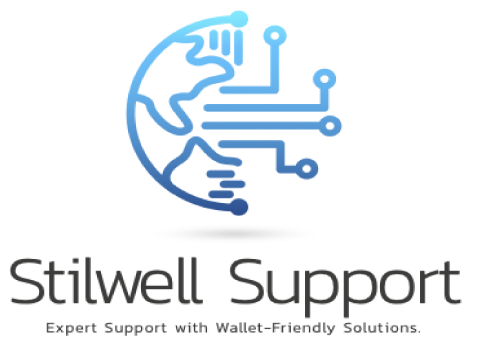CleanUp your organization’s app landscape by addressing the increasing risks of Shadow IT that accumulated over the summer. As your team embraced new tools for productivity, it’s vital to assess their security vulnerabilities and compliance with your company policies. Conducting a thorough review can help you mitigate potential data breaches and ensure that the applications align with your security standards. By taking proactive steps to secure these apps, you can protect your valuable data and maintain a strong cybersecurity posture.
Key Takeaways:
- Conduct an inventory of all applications added by employees to identify unauthorized or unapproved software.
- Assess the security risks associated with each app to determine which ones require immediate attention.
- Implement policies and guidelines for evaluating and approving new applications to mitigate future Shadow IT risks.
The Unsung Dangers of Shadow IT
Shadow IT introduces a myriad of security vulnerabilities that often fly under the radar. Despite boosting productivity, the applications your team adopts without formal approval can lead to data leaks, privacy violations, and compliance issues. A staggering 80% of employees admit using apps not sanctioned by their IT departments, creating significant blind spots in your organization’s cybersecurity posture. The lack of visibility into these tools often means that sensitive data is exposed, leaving your organization open to attacks and reputational damage.
Identifying Risky Applications
Determining which applications pose a risk begins with monitoring network activity and employee usage patterns. Tools that provide visibility into unauthorized apps can reveal usage statistics, user access levels, and data sharing practices. You should focus on applications that have ambiguous data protection policies or poor reputations, as these are more likely to become security liabilities. Regular audits can help you pinpoint the most dangerous apps lurking within your network.
Consequences of Unmanaged Software
Unmanaged software can lead to severe repercussions, including data breaches, legal penalties, and loss of customer trust. A single data leak through an unauthorized application might expose sensitive customer information, leading to costly settlements and regulatory fines. For instance, the average cost of a data breach now exceeds $3.86 million, highlighting the financial risks associated with neglected shadow IT. Additionally, unmanaged tools complicate your security landscape, creating multiple points of failure and making compliance with industry regulations far more challenging.
Examples abound of organizations that have faced dire consequences due to unmanaged software. In 2020, a major bank suffered a $5 million penalty for failing to secure customer data shared via unapproved applications. With evolving regulations like GDPR and CCPA, non-compliance can lead to fines reaching 4% of annual revenue—an unmanageable setback for many businesses. Beyond financial repercussions, the erosion of customer trust can cripple any organization’s long-term success, emphasizing the need for diligent shadow IT management to safeguard your reputation.
Navigating the App Jungle: Discovery Strategies
Identifying shadow IT begins with implementing structured discovery strategies. Systematic monitoring of network traffic, leveraging cloud access security brokers (CASBs), and utilizing endpoint detection tools can reveal unauthorized applications. Pairing these technologies with regular audits allows you to uncover apps in use and assess their compliance and security configurations, ensuring no app is left behind in the lengthy list of tools your team may rely on.
Inventorying Your Team’s Tools
Start by creating a comprehensive inventory of applications utilized across the organization. Involve software asset management tools to track applications, alongside surveys to glean insights directly from your team about what they’ve adopted. This method not only highlights popular tools but also identifies any security risks related to unmonitored software, enabling you to prioritize your clean-up efforts effectively.
Engaging Employees in the Audit Process
Engaging your employees fosters a collaborative environment for assessing shadow IT. By inviting them to participate in the audit process, you gain valuable insights into app usage, frequency, and necessity. This inclusive approach not only helps in collecting accurate data but also encourages buy-in from your team for implementing new policies or tools that address security concerns.
Employees often possess nuanced insights regarding the apps they use, making their engagement necessary for a thorough audit. Conducting workshops or feedback sessions lets you gather this information while educating your team on shadow IT’s risks. Encourage honest discussions about their experiences and preferences, which can form the basis for more secure, approved alternatives. Additionally, emphasizing the importance of security in their workflow cultivates a culture of accountability and awareness, enhancing your overall security posture.
Assessing Security Protocols in Popular Apps
Understanding the security protocols of popular apps is vital for identifying potential vulnerabilities within your organization. Conduct thorough assessments of apps your team frequently utilizes, focusing on data encryption, authentication methods, and access controls. Look for transparency in security practices and compliance with recognized standards such as GDPR or HIPAA. Effective scrutiny ensures that your team can work efficiently without compromising sensitive information.
Evaluating App Security Features
Examine each app’s security features, including multi-factor authentication, end-to-end encryption, and data loss prevention mechanisms. These features provide a safety net for your organization against data breaches and unauthorized access. Prioritizing apps with robust security measures significantly reduces your organization’s risk profile, empowering your team to operate securely and efficiently.
Key Compliance Considerations
Compliance with industry standards is non-negotiable in today’s regulatory landscape. Assess whether the apps used by your team adhere to pertinent regulations, such as GDPR, HIPAA, or PCI-DSS. Non-compliance can lead to hefty fines and reputational damage, emphasizing the need for diligent app evaluation as part of your security strategy.
Specific compliance requirements often hinge on the nature of your industry and the type of data handled. For instance, if your organization processes personal health information, HIPAA compliance is necessary, while financial services must adhere to PCI-DSS for payment data. Familiarize yourself with the regulatory frameworks applicable to your field to ensure every application in use meets necessary compliance standards, thus safeguarding your organization against legal penalties and enhancing overall security posture.
Wrangling for Resolution: Options for Management
Managing shadow IT effectively requires a clear strategy that prioritizes compliance and operational continuity. Organizations should consider a dual approach that involves assessing both existing shadow apps and the processes around their usage. This means involving teams to gain insights on app effectiveness and usage monitoring, leading to informed decisions about integration or elimination. A well-defined policy not only mitigates risks but also empowers your staff to work efficiently while staying secure.
Onboarding vs. Offboarding Shadow Apps
You face the choice of onboarding viable shadow apps or offboarding those that pose risks. For onboarding, establish a robust evaluation framework focusing on security, functionality, and team approval. Offboarding, on the other hand, requires clear communication with your teams to explain decisions and provide alternatives, ensuring a seamless transition away from unauthorized tools without disrupting workflow.
Integration with Existing Infrastructure
Effective integration depends on evaluating how shadow apps can coexist with your current systems. This includes assessing APIs, data sharing capabilities, and user access protocols. By creating a cohesive environment for new tools, you not only enhance operational efficiency but also bolster data security. Successful integration can lead to a more streamlined workflow where employees can leverage shadow apps without compromising corporate integrity.
Integrating shadow apps into your existing infrastructure involves a thorough examination of data flows and user privileges. Start by mapping out how these apps interact with current systems and identifying potential data silos or conflicts. For instance, if a shadow tool used for project management lacks direct integration with your CRM, it may force teams to duplicate efforts or, worse, lose track of critical information. Utilize middleware or application connectors that facilitate deeper connections without disrupting daily operations. By doing so, you can turn the previously chaotic landscape of shadow IT into a strategic asset that enhances productivity and maintains security standards.
Riding the Wave of Change: Creating a Sustainable Policy
Implementing a sustainable policy for app usage hinges on a collaborative approach among all stakeholders. Establish clear guidelines that reflect your organization’s security standards and compliance requirements. Regularly review and update these policies to adapt to emerging technologies and user needs. Engaging your team in the policy-making process fosters a sense of ownership, encouraging adherence and proactive behavior when it comes to app security.
Best Practices for Future App Additions
Develop a structured vetting process for new applications to ensure they meet your organization’s security and compliance criteria. All potential software should undergo evaluation for data protection capabilities, integration options, and usability before being authorized for use. Establishing a designated approval team will streamline this process and maintain oversight.
Training Staff on Safe Software Practices
To mitigate risks associated with shadow IT, invest in training programs that educate employees about safe software practices. Sessions should cover the importance of using approved applications, recognizing phishing attempts, and understanding data security principles. Frequent workshops and easily accessible resources reinforce these concepts and create a culture of security awareness.
Effective training involves engaging employees with real-life scenarios and historical examples of data breaches caused by unapproved software. Incorporating interactive elements such as quizzes and hands-on demonstrations helps reinforce learning. Consider conducting regular refresher courses to keep security practices top of mind, increasing your team’s ability to navigate the evolving digital landscape safely.
To wrap up
With this in mind, it is imperative for you to conduct a thorough assessment of the applications your team may have integrated over the summer. By identifying and securing these tools, you can enhance your organization’s overall cybersecurity posture and ensure compliance with company policies. Taking proactive steps now will mitigate risks and foster a safer, more efficient work environment. Make it a priority to communicate with your team about these applications and establish a clear process for managing future software integrations.



